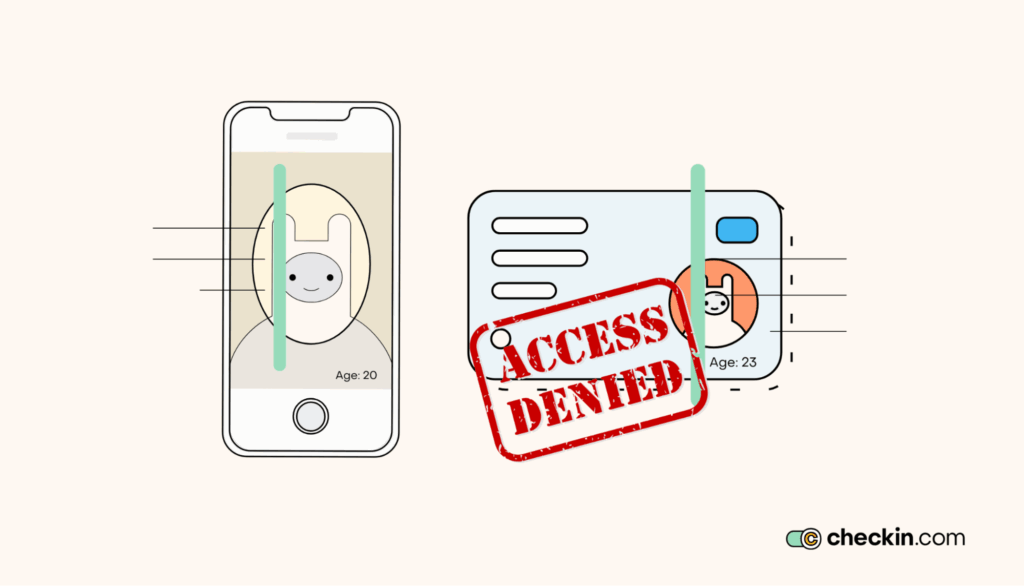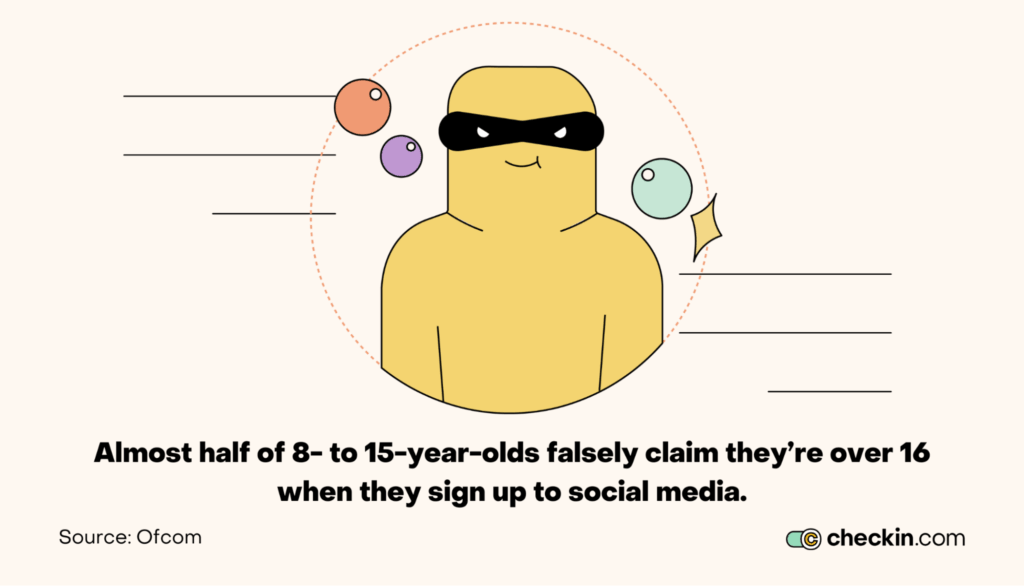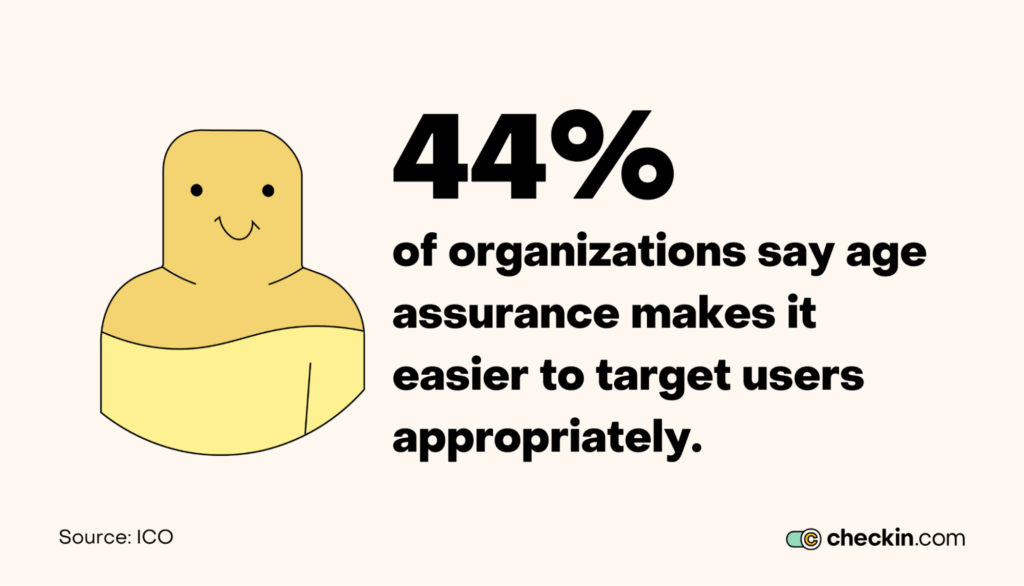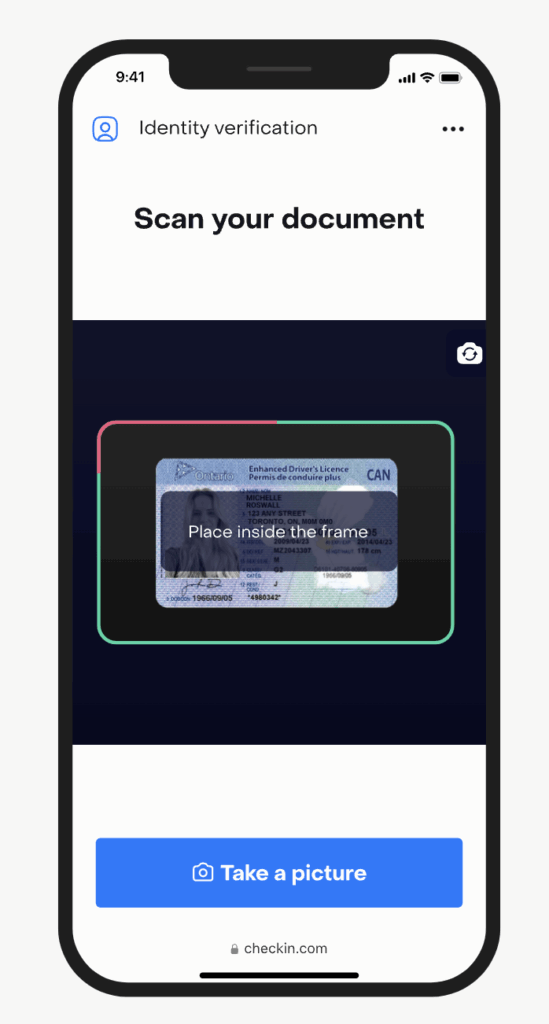
Regulators are tightening rules around social media age restrictions.
But conventional self-declaration methods aren’t working. Minors lie about their age during sign-up, leaving them exposed to harmful material, cyber threats, and online predators.
Social media companies must step up their verification processes. Otherwise, they risk hefty fines and reputational damage.
AI-powered social media age verification technology offers a scalable, accurate, and compliant solution.
Let’s see how these tools work. We’ll look at why social media platforms need them and what key features to look for to pick the right age verification solution.
What is age verification technology, and how does it work?
Age verification technology is software that confirms a user’s age before granting access to age-restricted content or services.
It’s designed to protect minors while keeping companies compliant with age-restriction regulations.
Up until now, age verification has been based on self-declaration, parental consent, or rudimentary ID checks.
These methods are easy to bypass. Users can lie or use deepfake technology to trick the system.
AI-powered age verification software uses artificial intelligence to verify a user’s age.
AI algorithms analyze multiple data points at once to authenticate official documentation and compare it to user images to ensure they meet age thresholds.

It does this using a variety of advanced technologies:
Document authentication uses Optical Character Recognition (OCR) to extract age-related data and check the authenticity of official ID documents.
Biometric verification uses biometric markers such as face structure, wrinkles, and skin texture to accurately determine age. It does this in two ways:
- Face matching compares facial features in ID images to a live selfie to check that both images indicate the same age range.
- Facial recognition compares these images to a database of known age-related facial features to confirm the user’s age.
Liveness detection asks the user to complete motion prompts to confirm the user is present and matches the ID provided.
Database checks automatically cross-reference a user’s details and image with public records and government databases to confirm their identity and age.
Continuous monitoring tracks accounts in real time and flags suspicious activity that indicates underage use
These tools help digital service providers confirm user ages to create safe online environments and stay compliant with evolving age-restriction laws.
Why do social media platforms need age verification tools?
The online environment is packed with risks for minors. But traditional age verification methods have proven to be ineffective.
Here are the reasons you need stronger mechanisms to safeguard minors on social media platforms.
Lots of people lie about their age
Children often don’t think about the potential harm of accessing inappropriate content. They simply want to use the same services as their friends.
Because of this, children often lie about their age. Of all the children (ages 8–15) with a social media account, 47% lie about their age, claiming they’re 16 or over.

This shows clearly that self-declaration doesn’t work to confirm a user’s age.
And when minors access content aimed at adults, they put themselves at risk of harmful content, online predators, cyberbullying, and other online risks.
But it’s not just children that lie.
Online predators and harmful actors pose as younger than they are to access platforms aimed at minors.
Without effective age verification processes, platforms don’t protect minors. And they put themselves at risk of legal backlash.
Non-compliance with age restriction laws can result in huge fines, site shutdowns, and reputational damage.
Age verification laws are rapidly evolving
Governments are tightening regulations to protect minors.
An increasing number of jurisdictions are enforcing age restrictions on social platforms and demanding they have effective systems to uphold these new rules.
Take the USA, for example.
The Kids Online Safety Act requires social platforms to reasonably determine user ages. It doesn’t explicitly mandate online age verification yet, but it does push platforms to implement better solutions.
But in Australia, social media age restrictions are legal requirements.
The Online Safety Amendment (Social Media Minimum Age) Act 2024 mandates a minimum age of 16 years old for social media accounts. Social platforms are responsible for enforcing these rules.
The same goes for the UK.
The Online Safety Act demands that platforms prevent any users under the age of 13 from accessing their services.
Failure to comply with new age-related regulations can lead to significant fines and legal action.
Take TikTok, for example.
The social media giant was fined $15.8 million by the ICO for poor age checks that allowed more than 1 million underage users to access the platform in the UK.
New techniques threaten conventional age checks
New fraudulent techniques are on the rise. The use of deepfakes and AI-generated content to bypass age checks makes it harder for social media platforms to enforce age restrictions.
Traditional methods like self-reporting are very easy to cheat. But basic ID checks are also simple to circumvent since 59% of human reviewers struggle to spot AI-generated media.
Using deepfake media, underage and malicious users create convincing fake IDs that bypass age checks.
But social media platforms that rely on outdated age verification are vulnerable to regulatory violations.
This is why AI-powered age-verification solutions are so important. They mitigate the risks of deepfakes by spotting manipulated material during the age verification process.
How do AI-powered age verification solutions improve age checks for social platforms?
Self-declaration and basic ID checks simply won’t cut it. They’re not effective at keeping minors safe, and they leave social media platforms vulnerable to non-compliance.
AI-powered age verification solutions change that. Here’s how.
Accurate age verification
Precision is paramount to an effective age verification system. For 56% of organizations, it’s the most important factor when selecting new age assurance methods.
Systems that can’t verify ages correctly are worthless and leave platforms at risk of non-compliance.
AI-driven age verification systems deliver fast, accurate, automated age checks. This reduces the risk of users accessing content that’s inappropriate for their age group.

These tools use:
- ID authentication to spot forgeries and AI-generated IDs
- Biometric verification to verify age thresholds and weed out manipulated images
- Liveness detection to prevent pre-recorded deepfakes
- Database cross-referencing to verify users against official records
And unlike manual ID checks, AI can spot discrepancies and image manipulation faster and more accurately than the human eye.
Faster onboarding
Age verification needs to be accurate. But it shouldn’t slow down onboarding, or you risk genuine users abandoning the signup process.
For most legitimate signups, advanced AI-powered systems take around five seconds to verify a user.
This reduces friction in the sign-up process without compromising accuracy.
Fewer false positives for genuine users
When a genuine user is flagged as suspicious, they’re passed up for enhanced due diligence (EDD). This is known as a false positive.
Extra investigations into false positives eat up resources and slow down verification.
This is frustrating for applicants, increasing the chance they’ll abandon the sign-up process. It also drives operational costs up.
AI-powered age verification is so precise that it significantly reduces false positives. This enhances the user experience while preventing bad actors from slipping through.
Better ongoing age verification
Sometimes, minors use an adult to sign up for age-restricted services. The adult submits their ID and passes the onboarding checks, and then the child uses the account.
In this respect, age verification shouldn’t be a one-off check. Users need to be re-verified to make sure underage users aren’t using adult accounts.
Ongoing monitoring detects account misuse, like underage users on a parent’s account.
AI algorithms pick up suspicious activity patterns that indicate underage use. This triggers re-verification, blocking account use until the user can prove their age.
Scalable age checks
Checking IDs one by one is time-consuming. This is where manual age verification falls short. It’s not scalable as it’s very resource-heavy.
Intelligent age-verification systems automate the process. They can handle large volumes of verification requests at once without compromising on accuracy.
This makes it far easier to scale age verification as increasing volumes of users sign up.
Improved content targeting
Age restrictions don’t just protect minors. They also allow social platforms to recommend the right content to the right user.
When underage users sign up to a social platform that’s not aimed at their age group, they risk exposure to inappropriate advertising.
Intelligent age-verification technology gathers data and offers insights into age-related preferences.
And 44% of organizations agree — this makes it easier to target users appropriately.

With the right age checks in place, you know how different age groups use your service. You can target appropriate advertising to minors while reserving adult content for older age groups.
Better targeting increases user engagement as they resonate with the recommendations. But more than that, it increases revenue as it enhances the platform’s value to advertisers.
Automated compliance
AI-driven age-verification tools automatically update compliance models to meet changing regulations.
If age restrictions or data privacy laws change, the algorithms will incorporate these updates into the system automatically. This prevents accidental non-compliance due to outdated compliance models.
How to pick the right age verification social media software: Top features to look for
There’s growing pressure for social media platforms to implement robust age verification techniques.
The best solutions balance fast processing with accuracy and excellent security.
Here’s what you need to look for.
1. AI-powered age estimation
AI algorithms are fast, accurate, and scalable.
They can analyze facial features and document authenticity far better than any human reviewer.
Deep learning algorithms are trained on datasets of age-related biometric markers.
Users simply submit their official ID and a live selfie. AI models compare facial biometrics to age-threshold benchmarks to determine age at a high level of accuracy.
This makes for fast, frictionless age verification.
2. Biometric verification and liveness detection
Most organizations use self-declaration for age assurance. Only 28% use biometric measures.
This is short-sighted since biometric verification and liveness detection are incredible tools for catching synthetic identities.
Face matching compares a user's live selfie to their ID document to make sure they match. Facial recognition compares users to existing databases to verify their identity. Both these tools work together to prevent a user from trying to submit falsified documents.
On top of this, 3D liveness detection ensures the person applying is present during the process.
Using motion and depth perception analysis, the system can determine whether the applicant is using a manipulated or pre-recorded video to bypass age checks.
3. Document verification with OCR
AI-powered tools use ID scanning to authenticate official government-issued IDs and verify a user’s age.
OCR captures document data automatically, while AI algorithms analyze the document for signs of forgery or tampering.

This method prevents minors from using fake IDs during age checks.
4. Easy-to-use, localized Interfaces
Age checks shouldn’t slow down verification.
The best age verification tools have easy-to-use interfaces with clear guidance on how to complete the process.
Since most online platforms operate internationally, it’s important to offer a localized experience to users.
Tools like Checkin.com support 80+ languages, adapting the interface to different cultural norms. This prevents mistakes due to language barriers.
An age verification tool should also be able to analyze documents from all the jurisdictions the social platform operates in.
For example, Checkin.com can analyze 14,000 different document types from over 190 countries. This makes verification far more accessible globally, improving market access.
4. Seamless integration and integration support
Age data can help social platforms target users better. To use this data effectively, your age verification tools should integrate seamlessly with your existing systems, such as marketing automation tools and customer relationship management (CRM) software.
Look for a tool with easy integration that uses APIs, SDKs, and simple plug-and-play modules.
Rather than relying on your own team to work out how to implement it best, find a provider that offers dedicated integration support. This reduces development time and ensures the system works smoothly with your existing infrastructure.
6. Automatic multi-jurisdictional compliance
As global age verification and data privacy laws change, it’s imperative your system updates automatically to prevent accidental non-compliance.
Look for tools that automatically update to reflect changing regulations in all the jurisdictions you operate in.
For example, Checkin.com updates compliance models for 190+ territories.
Take the EU, for instance. Checkin.com is accredited by the German Commission for the Protection of Young People in the Media (KJM), showing it meets Germany’s stringent age verification laws.
7. Watertight security features
Handling user age data requires high levels of security. There are tight regulations on data privacy for minors.
Here are some of the key security features to look for:
- Localized server hosting to allow customized storage locations to meet local regulations
- ISO 27001 certification and GDPR compliance
- End-to-end encryption for all sensitive data and documents
8. Data and analytics for continuous optimization
Pick a tool with advanced analytics.
Real-time insights into age verification trends help teams stay on top of fraud attempts. Analytics show compliance success rates, fraud patterns, and verification performance.
This data helps to pinpoint drop-off points to help improve user experience and highlight emerging fraud trends before they escalate.

Insights are also helpful in providing data that helps personalize marketing and offer age-appropriate content recommendations.
Age verification to protect minors and stay compliant
Social media age verification aims to protect minors and improve content targeting for all ages.
But in the wake of tightening legislation, social media platforms also need to consider how they’ll stay compliant with new age restrictions.
Choosing the right age-verification social media software ensures accuracy, security, and scalability. It improves the user experience and keeps you compliant in all the countries your platform operates in.
Don’t wait for new laws to catch up.
Future-proof your social platform with a powerful AI solution today. Explore Checkin.com’s age verification solutions and safeguard your platform against compliance risks and underage users.